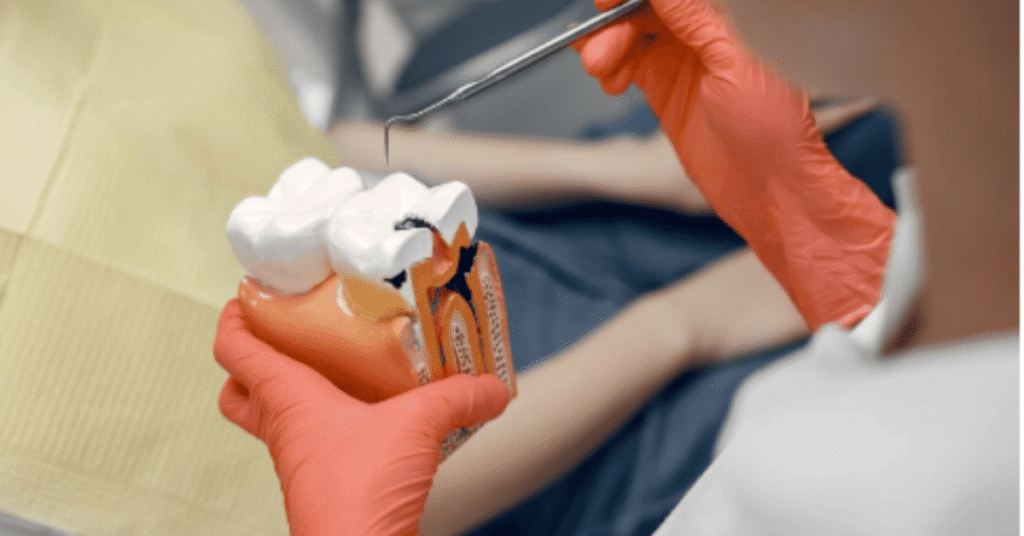Root canal recovery is usually smoother than expected. Most people feel better within a few days, and full recovery typically takes about one to two weeks. Pain is manageable, swelling is minimal, and with proper care—like good oral hygiene and avoiding hard foods—your treated tooth should last a lifetime. But healing isn’t just about pain levels. It involves tissue repair, infection control, bite adjustment, and psychological comfort. This guide offers a full look into recovery after a root canal—how it feels, how to manage it, and what truly leads to long-term success.
Understanding Root Canal Therapy: A Refresher
A root canal isn’t as dreadful as its reputation implies. It’s a restorative dental procedure aimed at saving a tooth that would otherwise need extraction. The treatment involves removing infected or inflamed pulp from inside the tooth, disinfecting the canal, and then sealing it. This ends the cycle of pain and infection while preserving the tooth’s outer structure.
The real work, though, often begins after you leave the dental chair.
The First 48 Hours: Initial Healing and Pain Control
Day 1: The Numb Reality Wears Off
As the anesthesia fades, mild to moderate discomfort can set in. This is usually due to inflammation at the tip of the tooth root, not from inside the tooth—since the nerve has been removed.
Pain Expectations:
Most patients describe the discomfort as a dull ache or soreness, similar to a bruise. Over-the-counter medications like ibuprofen or acetaminophen are usually effective.
Swelling:
Mild swelling is common, especially if infection was present before the procedure. An ice pack applied in 10-minute intervals can help.
Eating Tips:
Stick to soft foods like mashed potatoes, scrambled eggs, soup, or yogurt. Avoid chewing on the treated side.
Days 3–7: Tissue Recovery and Behavioral Adjustments
By now, acute pain should be declining. If it’s not, it might indicate an issue like residual infection or an uneven bite.
Symptoms You Might Notice:
- Tenderness around the treated tooth
- Slight jaw stiffness
- Sensitivity when biting
Actions to Take:
- Continue soft foods
- Avoid sticky, crunchy, or hot foods
- Gently rinse with warm salt water
Psychological Phase:
This is when many patients start wondering, “Shouldn’t I be feeling normal by now?” It’s important to remember that internal tissues and supporting ligaments take longer to fully calm down than pain alone suggests.
Week 2: Stabilization Phase
Most people return to their normal routines. Some may forget they even had a root canal. Others may still experience occasional tenderness, especially when chewing. A follow-up visit is often scheduled around this time to evaluate healing and possibly place a permanent crown.
Crucial Tip:
Don’t delay the crown. It protects the weakened tooth from fractures. Skipping this step is a major reason why root canal-treated teeth fail.
What Influences Recovery Speed?
Recovery isn’t uniform. Here are the main factors that affect healing time:
| Factor | Description | Influence on Recovery |
|---|---|---|
| Extent of Infection | More severe infections take longer to heal | Slower |
| Quality of Procedure | Skill and thoroughness matter | Faster if done well |
| Immune Health | Diabetics or immunocompromised patients may heal slowly | Variable |
| Tooth Location | Molars have more roots and are harder to treat | Slower |
| Bite Adjustment | High bite pressure can prolong pain | Slower until corrected |
Signs of Trouble: When to Call the Dentist
Recovery should trend positively. If symptoms worsen after a few days, you should call your dentist. Warning signs include:
- Increasing pain after 3–5 days
- Swelling that spreads to the face or neck
- Persistent bad taste or foul smell
- Fever or chills
- Tooth feels “too high” when you bite down
These may signal post-procedural infection or an unresolved issue.
Managing Anxiety and Psychological Stress During Recovery
Dental treatment isn’t just physical—it’s psychological. Many patients report stress, fear of pain, or obsession with post-procedure sensations. Understanding what’s normal can help.
Common Fears vs. Reality:
- “Why does it still hurt?”
Ligaments take longer to settle than nerves. Pain doesn’t always mean failure. - “I feel pressure when chewing—is that bad?”
Some pressure is normal; extreme pain isn’t. If in doubt, get it checked. - “Is this permanent?”
With proper restoration and oral hygiene, root canal-treated teeth can last decades.
Crown Placement: The Unsung Hero of Recovery
Getting a crown placed over the treated tooth isn’t just cosmetic—it’s protective. The treated tooth, now hollowed and more brittle, is vulnerable to fracture without a crown.
Timing Matters:
Most dentists recommend placing the crown within 2–3 weeks after the root canal. Delaying this step risks reinfection or structural damage.
Crown Options:
- Porcelain for aesthetics (front teeth)
- Porcelain-fused-to-metal (PFM) for strength (premolars)
- Gold or zirconia for durability (molars)
Lifestyle and Diet Tips for Better Healing
Foods to Favor:
- Cooked vegetables
- Oatmeal or soft cereal
- Smoothies (without seeds)
- Soups and stews
- Soft-cooked pasta
Foods to Avoid:
- Nuts, chips, or granola
- Hard bread crusts
- Chewy candies
- Alcohol (can interfere with healing)
Other Habits to Watch:
- Avoid smoking—it slows blood flow and tissue repair
- Limit caffeine and carbonated drinks
- Maintain regular brushing (but gently around the treated area)
How Long Until You’re Truly “Healed”?
There’s no one-size-fits-all timeline, but here’s a general idea:
| Recovery Milestone | Time Frame |
|---|---|
| Pain relief | 1–3 days |
| Soft chewing returns | 5–7 days |
| Crown placement | 10–21 days |
| Full tissue healing | 3–6 months |
| Full functional restoration | After permanent crown |
Some mild soreness may linger for weeks. But anything worsening—or not improving—deserves attention.
Complications That Can Delay Recovery
While rare, complications can slow or interrupt your root canal recovery:
- Missed Canals: Teeth can have complex canal systems. If a canal was missed, infection may persist.
- Vertical Root Fracture: A crack extending down the root can cause persistent pain. These are often not visible immediately.
- Overfilling or Underfilling: If the filling material doesn’t reach the end of the root—or goes too far—it can cause discomfort.
- Sinus Involvement: Upper molars are close to the sinuses, which may be irritated temporarily.
Retreatments and Alternatives
If the tooth doesn’t respond well to treatment, retreatment or surgical options may be considered.
Retreatment:
The dentist reopens the tooth, removes the previous filling material, and tries again.
Apicoectomy:
A minor surgery that removes the tip of the root and seals it from the end.
Extraction and Implant:
If saving the tooth is no longer feasible, a dental implant can be a reliable alternative.
Psychological Closure: Trusting the Process
Many patients dwell on their recovery more than necessary. Trusting your dentist, sticking to your follow-up visits, and monitoring for genuine symptoms (not imagined ones) is key to moving forward root canal recovery.
Final Thoughts: Root Canal Recovery Is Manageable and Predictable
The majority of root canal recoveries proceed without serious issues. Pain is usually modest and short-lived. By the end of the first week, most patients are back to their normal routines. Crowning the tooth is essential. Proper hygiene, good diet, and a little patience are what truly ensure success.
And the best part? A well-treated root canal tooth can last as long as your natural teeth.
FAQs
1. How long does it take to fully recover from a root canal?
Most people experience significant relief within 3 to 5 days, but complete healing—including tissue regeneration and bite adjustment—may take a few weeks. With proper care, the treated tooth should stabilize fully in 1 to 2 months.
2. Is it normal to feel pain days after a root canal?
Yes, mild discomfort or tenderness for up to a week is normal, especially when biting. However, pain that increases or becomes severe after several days may indicate a complication and should be checked by your dentist.
3. What should I eat after a root canal?
Stick to soft, lukewarm foods like scrambled eggs, mashed potatoes, yogurt, soups, and smoothies. Avoid hard, crunchy, sticky, or very hot foods for at least a few days to prevent irritation or damage.
4. Do I really need a crown after a root canal?
In most cases, yes. A crown protects the structurally weakened tooth from fractures and long-term failure. Skipping the crown significantly increases the risk of tooth loss, especially for back teeth.
5. Can I brush and floss after a root canal?
Absolutely. Gentle brushing and flossing are essential for recovery and preventing infection. Just be careful around the treated tooth until it feels normal again—usually within a few days.







